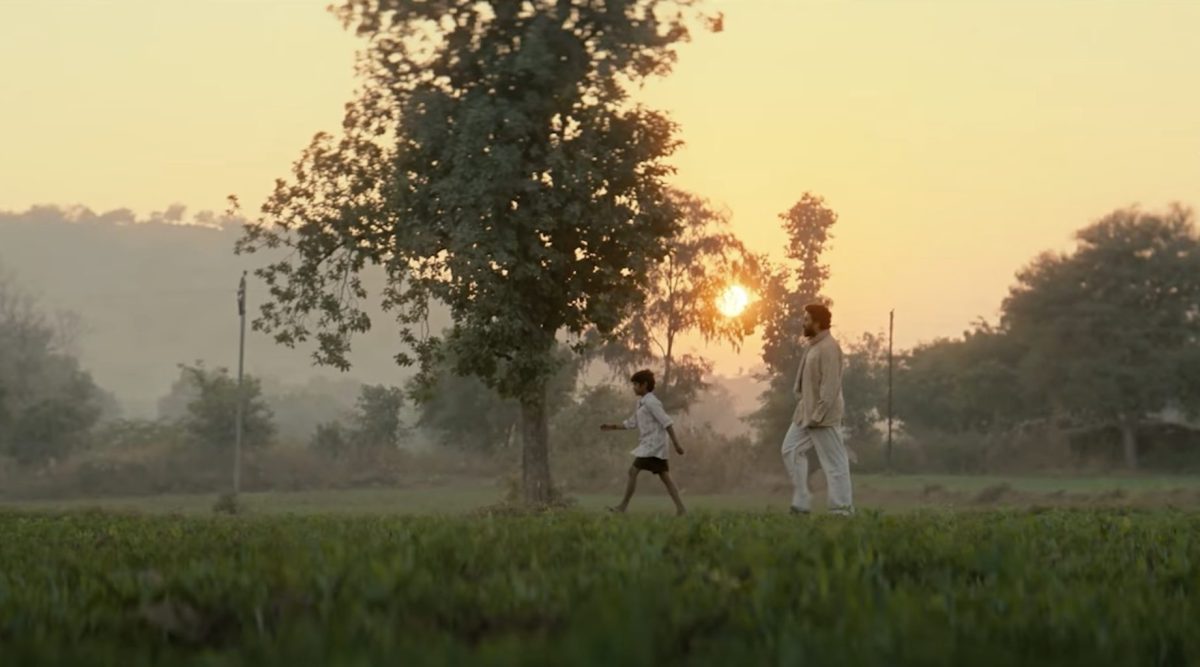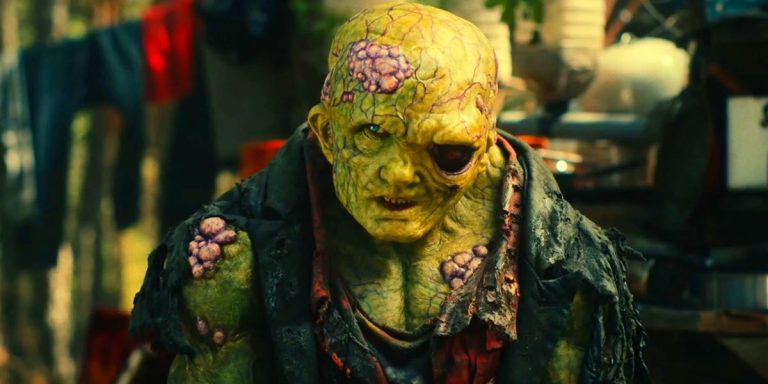Have you wondered whether your acceptance or rejection of social, cultural, and religious events has room for the calamities that take place inside their crevices? If you haven’t, then it is not your fault. You have been trained, unconsciously, by the power structures of society to perceive social events by their scintillating outlook only. It is this hegemonic order that permeates the horizon of the popular psyche. At this juncture, a film like “Kaalidhar Laapata,” intended to operate in the popular discourse, becomes an essential cultural artifact to counter the predominant order.
I’d be pretty honest. There’s nothing in “Kalidhaar Laapata” that blew me away. I liked the first few minutes, up to the first half – I anticipated something good might come out of it – but soon it fell prey to the clichéd tropes. But even with the flaws that the film entailed, I’d still like to bat for it because Madhumita (director, co-writer of the film) has highlighted a particular kind of crisis that, I’m quite sure, you haven’t, and you wouldn’t have, noticed. So, in a way, the film works as a visual document that provides space to the para-text of a mega event that could have gone unnoticed otherwise.
“Kaalidhar Laapata” tells the story of ‘Kaalidhar’ (Abhishek Bachchan) – a middle-aged illiterate person suffering from dementia – who has been abandoned by his brothers (Vishwanath Chatterjee and Priyank Tiwari) at the ‘Maha Kumbh’, which took place earlier this year in Prayagraj, Uttar Pradesh. A story revealing this kind of moral corruption shouldn’t come as something fresh to you. You must have encountered this subject before. Moral corruptness stems from a flawed economic base. In short, every monstrous distortion in the individual psyche is a byproduct of capitalism.
Now, the point is that if you are making a film on this problem, you have to have something like an experimental form to critique this problem. Otherwise, you are simply making cliché stuff. Sadly, “Kaalidhar Laapata” ends up as a cliché film, as it neither explores this crisis from a radical position nor offers an empirical lens to study it critically. The only potential of the film lies in its maker’s (political) choice to use the ‘Maha Kumbh’ as the stage of the story’s initial operation.
‘Kaaalidhar’, when he has become an unwanted burden – both emotionally and financially (due to his frequent hospital bills and other medical expenses) – for his family, even after sacrificing his whole life for them, is abandoned in the madding crowd of ‘Maha Kumbh’ by his two brothers and the shrewd sister-in-law. A vicious greed for usurping Kalidhar’s wealth is behind their crooked decision. They execute this quite surely because they knew Kalidhar’s ailing mind wouldn’t allow him to come back home.
Their conviction in abandoning him so smoothly could also have another degree of justification. Perhaps Kalidhar’s family equated his clinical forgetfulness as a purgatorial pretense to purge their sin. But ‘Karma’ didn’t take long to punish them. Ominous things started coming their way as soon as they came back home from the ‘Maha Kumbh.’ Whereas, Kaalidhar meets a jolly teen ‘Ballu’ (Daivik Baghela) and rediscovers the meaning of life.

The idea of a grown-up coupling with a teen always freshens up our minds. Bollywood in this century has made some really good stuff by encapsulating this formula, for instance, Aamir Khan and Darsheel Safary in “Taare Zameen Paar” (2007), Amitabh Bachchan and Aman Siddiqui in “Bhoothnath” (2008). I’m not sure if “My Name is Khan” (2008) can be categorized like this, but Shah Rukh Khan’s fleeting pair-up with Arjan Aujla, in that film, holds a very special place in my heart. From these films that I mentioned and the ones I forgot to name, one needs to understand that it was not merely actors but an undercurrent of potential screenplays, aided by the actors, that still make us cherish those films. The latter lacks in the case of “Kaalidhar Laapata.”
In “Kaalidhar Laapata” you would probably see Abhishek Bachchan for the first time shedding his decent-fellow clothes, stepping down from his typical urbane characters and growing a mouthful beard, and wearing dirty clothes. Director Madhumita also said in a promotional interview that Abhishekh really worked hard to come out of his shell and embrace the helpless, clinically ailing character of ‘Kaalidhar.’ Here you will see him sleeping in a makeshift tent, drinking whiskey for the first time in his life, getting thrown off a bus for not having enough money to cover the fare. Abhishek Bachchan and Daivik Baghela’s stellar performance would have been considered a standout only if the makers could have assisted them with a potential script.
The film, after running for some 40-odd minutes, incorporates every available cliché that we are tired of seeing. Out-of-the-blue songs to cover voids left by amateurish writing don’t improve a flawed screenplay. Using this trope nowadays is like testing the patience of viewers. Above all, what really irritated me was the occasional disruption in ‘Kaalidhar’s dementia. It seemed as if the disease afflicts him only when the maker wants; otherwise, he is perfectly fine and fit. In other words, Kaalidhar’s illness depends on his creator’s mood, which by no means is a suitable way to treat a character suffering from dementia.
As I said before, there’s only one reason to bat for “Kaalidhar Laapata” – it’s the political choice of using an event that has left its imprint in our minds. The almost state-sponsored ‘Maha Kumbh’ had enclosed a stark class division, which led many of us to critique the event in rage. Separate spaces for ablutions were created for different classes. While the bureaucrats and celebrities bathed in the pious waters of holy rivers, the other side was packed with the working-class crowd. The other side, initially overlooked by the mainstream media, ended up in a fatal stampede where some people even lost their lives. In this chaos, it indeed is possible that a family, driven by greed, abandoned someone like ‘Kaalidhar.’ I wish we could have something like a scale to measure films on their social relevance. If we had one, “Kaalidhar Laapata” would be regarded as a good film!


![Wonder Woman 1984 [2020] Review: Falls way short of its predecessor](https://79468c92.delivery.rocketcdn.me/wp-content/uploads/2020/12/Wonder-Woman-1984-768x432.jpg)


![Loktak Lairembee [2016] MUBI Review – A Poignant, Poetic Tale from the Floating Islands in Loktak Lake](https://79468c92.delivery.rocketcdn.me/wp-content/uploads/2021/10/Loktak-Lairembee-2016-Review-768x384.jpg)
![Antiporno [2017]: In The Name of Sisterhood](https://79468c92.delivery.rocketcdn.me/wp-content/uploads/2017/08/sisterhood-768x512.jpg)
